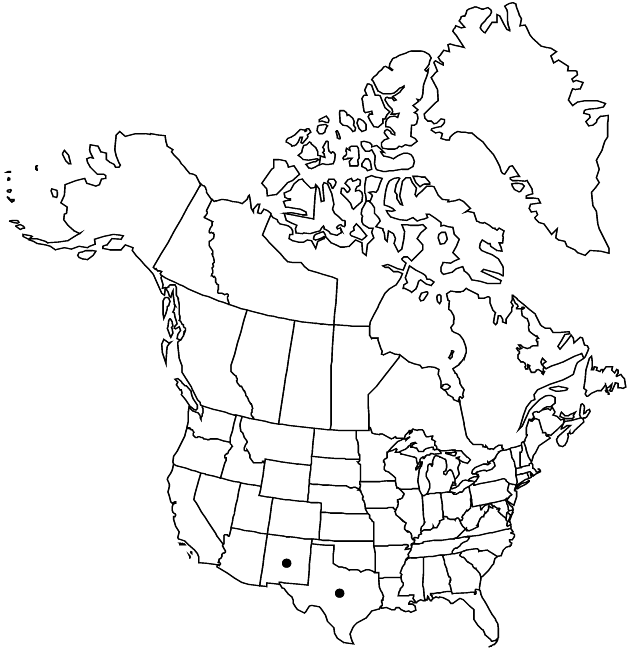Ericameria nauseosa var. texensis
Phytologia 75: 88. 1993.
Common names: Texas rabbitbrush
EndemicConservation concern
Basionym: Chrysothamnus nauseosus subsp. texensis L. C. Anderson SouthW. Naturalist 25: 197, figs. 1, 2. 1980
Plants 20–40(–50) cm. Stems whitish, leafy, loosely tomentose. Leaves grayish green; blades 1-nerved, linear, 10–35 × 1(–1.5) mm, faces loosely tomentulose. Involucres 8–11.5 mm. Phyllaries 16–23 (outer margins ciliate), apices erect, acute to obtuse (outer) to acuminate (inner), outer abaxial faces tomentose, glabrescent. Corollas 8.4–10.9 mm, tubes glabrous or sparsely puberulent, lobes 0.6–1.3 mm, glabrous; style appendages shorter than stigmatic portions. Cypselae glabrous; pappi 5.2–7.4 mm. 2n = 18.
Phenology: Flowering fall.
Habitat: Limestone cliffs and among boulders, less common on gravel alluvium of streambeds, associated with bigtooth maple, hornbeam, madrone, and yellow pine woodlands
Elevation: 1500–2100 m
Discussion
Of conservation concern.
Variety texensis is known from the Guadalupe Mountains.
Selected References
None.
Lower Taxa
None.
... more about "Ericameria nauseosa var. texensis"
